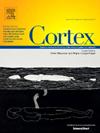Increased neural variability in adolescents with ADHD symptomatology: Evidence from a single-trial EEG study
Abstract
Increased intrasubject variability of reaction time (RT) refers to inconsistency in an individual's speed of responding to a task. This increased variability has been suggested as a fundamental feature of attention deficit hyperactivity disorder (ADHD), however, its neural sources are still unclear. In this study, we aimed to examine whether such inconsistency at the behavioral level would be accompanied by inconsistency at the neural level; and whether different types of neural and behavioral variability would be related to ADHD symptomatology. We recorded electroencephalogram (EEG) data from 62 adolescents, who were part of a prospective longitudinal study on the development of ADHD. We examined trial-by-trial neural variability in response to visual stimuli in two cognitive tasks. Adolescents with high ADHD symptomatology exhibited an increased neural variability before the presentation of the stimulus, but when presented with a visual stimulus, this variability decreased to a level that was similar to that exhibited by participants with low ADHD symptomatology. In contrast with our prediction, neural variability was unrelated to the magnitude of behavioral variability. Our findings suggest that adolescents with higher symptoms are characterized by increased neural variability before the stimulation, which might reflect a difficulty in alertness to the forthcoming stimulus; but this increased neural variability does not seem to account for their RT variability.

 求助内容:
求助内容: 应助结果提醒方式:
应助结果提醒方式:


